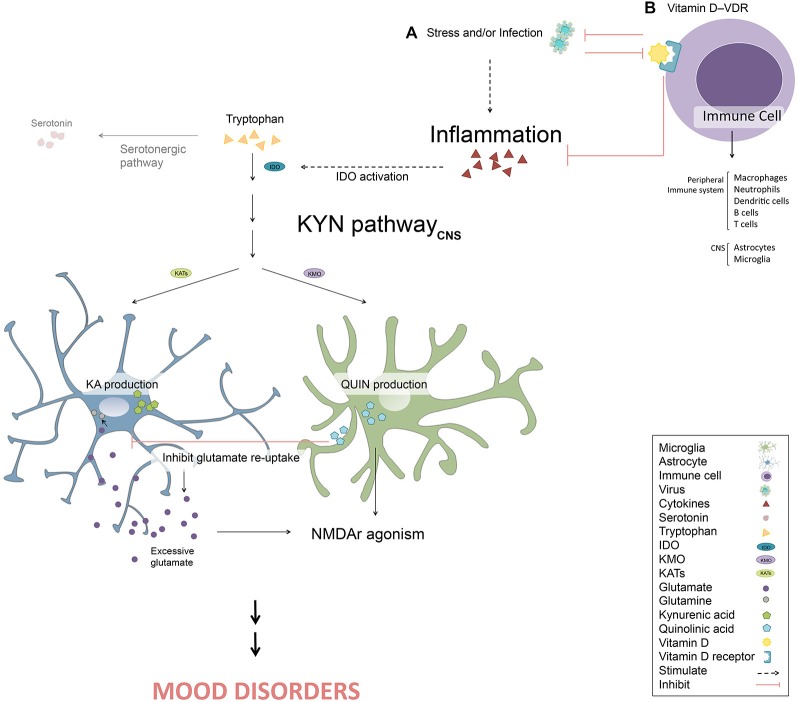Figure 1.
Vitamin D and its receptor (VDR) in the cytokine-mediated onset of depression. (A) Stress and/or infection activate the inflammatory response resulting in inflammatory cytokines production. These cytokines can trigger the kynurenine (KYN) pathway by stimulating indoleamine 2, 3-dioxygenase (IDO). Therefore, tryptophan enters the KYN pathway instead of the serotonergic pathway, resulting in the depletion of monoamines. Once the KYN pathway is triggered, kynurenic acid (KA) in astrocytes and quinolinic acid (QUIN) in microglia are synthesized. QUIN contributes to the activation of N-methyl-D-aspartate receptor (NMDAr) itself and by inhibiting glutamate re-uptake, resulting in excessive extracellular glutamate, inducing further NMDAr agonism. Excessive NMDAr activation leads to the disruption of the glutamatergic system, a key pathological feature in mood disorders. (B) The binding of vitamin D to VDR in a number of immune cells (e.g., macrophages, neutrophils, dendritic cells, B cells, T cells, astrocytes and microglia) leads to attenuation of the inflammatory response and stimulation of anti-microbial peptides production, potentially ameliorating symptoms of mood disorders. However, certain pathogens can also block or modulate epigenetic VDR activity.

